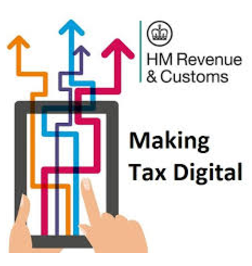Making Tax Digital & Legal Software Changes

Making Tax Digital – What does it mean to you
Introduction to Making Tax Digital
Making Tax Digital is a key part of the government’s plans to make it easier for individuals and businesses to get their tax right and keep on top of their affairs. This means the end of the annual tax return for millions.
A number of concerns about the pace and scale of change have been raised. As a result the that the roll out for Making Tax Digital for Business has been amended. This is to ensure businesses have plenty of time to adapt to the changes.
Businesses will not now be mandated to use the Making Tax Digital for Business system until April 2019 and then only to meet their VAT obligations. This will apply to businesses who have a turnover above the VAT threshold.
Four foundations of Making Tax Digital
1. Better use of information
Making Tax Digital means you will not have to give HMRC information that it already has.or that it is able to get from elsewhere. This means from banks, building societies and other government departments.
Digital tax accounts for all will mean that you can see the information that HMRC holds and be able to check at any time that their details are complete and correct.
2. Tax in real time
Customers will not have to wait until the end of the year or longer to know how much tax they should pay. HMRC will collect and process information affecting tax as close to real time as possible. This will help help prevent errors and stop tax due or repayments owed building up.
3. A single financial account
At the moment most taxpayers cannot see a single picture of their liabilities and entitlements in one place. By 2020, customers will be able to see a comprehensive financial picture in their digital account, just like they can with online banking.
DPS FD Changes for Making Tax Digital
4. Interacting digitally with customers
You or your accountant (or agents) will be able to interact with HMRC digitally and at a time to suit them. They already have access to a digital account which will present them with an increasingly personalised picture of their tax affairs. This is then added to with prompts, advice and support through webchat and secure messaging. Digital record keeping software will be linked directly to HMRC systems, allowing customers to send and receive information directly from their software.
Smartsoft FD will be set to automatically upload information to HMRC. The VAT return will have the option to auto upload. This is the first change PAYE and NI figures for already upload. DPS FD changes are scheduled for 2018 when the pilot is fully effective. As it happens FD already has provision for talking to other systems so we do not see this as a huge change. Have a look at
The , was published in December 2015, set out how this bold vision for the future of the tax system would be achieved by 2020.
Making Tax Digital for business
The majority of tax payers want to get their tax right but the latest tax gap figures (2014 to 2015) show too many find this hard, with a cost to the Exchequer of over £8 billion a year due to avoidable taxpayer mistakes. In 2014 to 2015 over £3.5 billion of revenue was lost due to these mistakes in VAT returns alone.
A modern tax system, based on digital technology will make it easier for businesses to get their tax right. Reducing the amount of avoidable errors will also reduce the cost, uncertainty and worry that businesses face when HMRC is forced to intervene to put things right.
The logic of digitising the tax system is widely recognised and millions of businesses are already banking, paying bills, and interacting online. Digitising routine business tasks such as record keeping is the next step and is one many businesses have already taken.
Businesses will not now be mandated to use the Making Tax Digital system until April 2019 and then only to meet their VAT obligations. This will apply to businesses who have a turnover above the VAT threshold.
This change means that no business will need to provide information to HMRC under Making Tax Digital for business more regularly than they do now. VAT has been online since 2010 and over 98% of VAT registered businesses already file electronic returns.
Making Tax Digital will build on this by integrating digital record-keeping to provide a single, seamless process with quarterly updates generated and sent direct from the software the business/agent uses to keep their records.
HMRC expect many of these businesses to take the opportunity to provide quarterly updates for other taxes too, but there will be no mandatory requirement to do so. Similarly, businesses that are not VAT registered and those below the VAT threshold who have voluntary registered for VAT can opt to join Making Tax digital for Business, giving them the choice of whether to opt to use commercial software to keep track of their tax affairs digitally and update HMRC on a quarterly basis.
By introducing Making Tax Digital for Business on a voluntary basis for most and only making it mandatory for those who already interact with HMRC regularly and digitally they feel they can smooth the transition maximising the opportunities of a modern digital tax system.
The government has committed that it will not widen the scope of Making Tax Digital for Business beyond VAT before the system has been shown to work well, and not before April 2020 at the earliest. This will ensure that there is time to test the system fully and for digital record keeping to become more widespread.
Consultations
In August 2016 HMRC They set out our thinking on some of the key design and development of Making Tax Digital.
Next steps
The first businesses have already started keeping digital records and providing updates to HMRC as part of a live pilot to test and develop the Making Tax Digital service for income tax and NICs and HMRC will continue to expand this pilot.
The government will re-introduce the legislation to give effect to Making Tax Digital for business that was published in the Finance Bill after the Spring 2024 Budget.
HMRC will start to pilot Making Tax Digital for VAT by the end of 2024, starting with small-scale, private testing, followed by a wider, live pilot starting in Spring 2018. This will allow for well over a year of testing before any businesses are mandated to use the system. No business will be mandated before 2019.
From April 2019 businesses above the VAT threshold will be mandated to keep their records digitally and provide quarterly updates to HMRC for their VAT.
Research and case studies
HMRC have published and created a to illustrate how Making Tax Digital as a whole will work in practice.
- September 16, 2024Equifax Cyber Security Attack Highlights Secure Legal Software.
- September 03, 2024Smartsoft Business Solutions's employee awards scheme introduced.
- June 30, 2024Smartsoft now Microsoft Gold Partner.
- January 14, 2024Making Tax Digital & Legal Software Changes.




